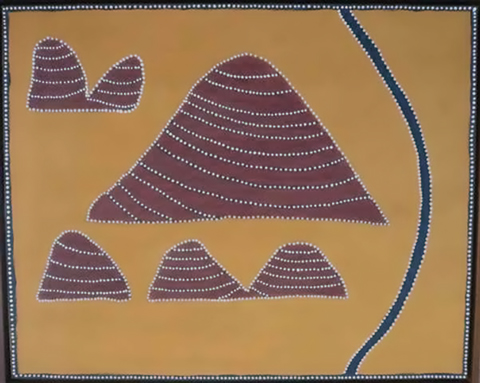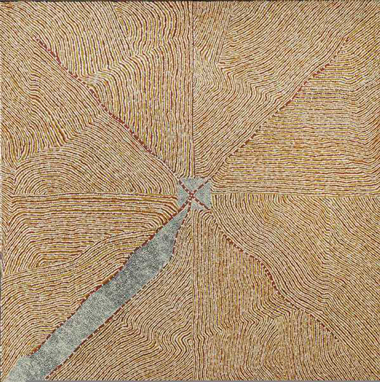The Shalom Gamarada scholarship program is funded both by the sale of work by Aboriginal artists at the annual, week-long Shalom Gamarada Ngiyani Yana exhibition and by the provision of scholarships by private donors and corporate sponsors. The name of the program comes from the term “gamarada ngiyani yana” in the Eora language and translates to “we walk together as friends.” “Shalom” is a Hebrew word, meaning peace and is part of the name of the Shalom College at the University of NSW. The program was founded in 2005. In 2010, the sixth exhibition and sale will run from 27th June to 4th July.
Exhibition audiences will be offered a unique opportunity to experience an incredible and diverse range of Indigenous art practice from across Australia. Shalom Gamarada will showcase an extensive range of more than 120 stretched artworks hanging and many more unstretched works, some of which can be seen in this issue of the Journal (Box 1, Box 2, Box 3, Box 4, Box 5, Box 6, Box 7, Box 8, Box 9, Box 10), with a total value of over one million dollars. All artworks will be available for purchase, with prices ranging from a modest $150 to more than $25,000. Commissions from all art sales go to residential scholarships for Aboriginal and Torres Strait Islander Medical students at Shalom College.
Details of the Exhibition and show
Open: 11 am to 7 pm each day from 27 June to 4 July
More information: visit http://www.shalomgamarada.org/ or call Professor Lisa Jackson Pulver on 0404 859 989.
The dance of life (cover image)
 |
|
The potential solutions for healing and restoration of wellbeing come from considering additional factors encompassing issues at the coalface of symptom presentation and service delivery, such as education and training, policy, sociopolitical context and international perspective. As this painting suggests, we can only exist if firmly grounded and supported by our community and spirituality, while always reflecting back on culture in order to hold our heads up high to grow and reach forward to the experiences life has waiting for us. The stories of our ancestors, the collective grief as well as healing, begin from knowing where we have come from and where we are heading. From the Aboriginal perspective, carrying the past with you into the future is as it should be. We are nothing but for those who have been before, and the children of the future will look back and reflect on us today. When we enable a person to restore all of the dimensions of their life, then we have achieved a great deal. When all of the dimensions are in balance within the universe, we can break free of our shackles and truly dance through life. |
- Lisa R Jackson Pulver1
- Muru Marri Indigenous Health Unit, University of New South Wales. Sydney, NSW















